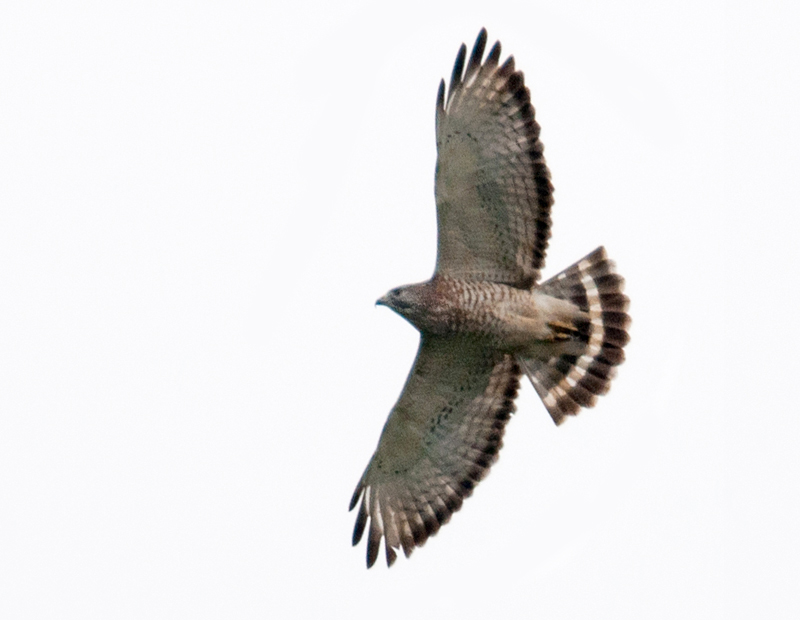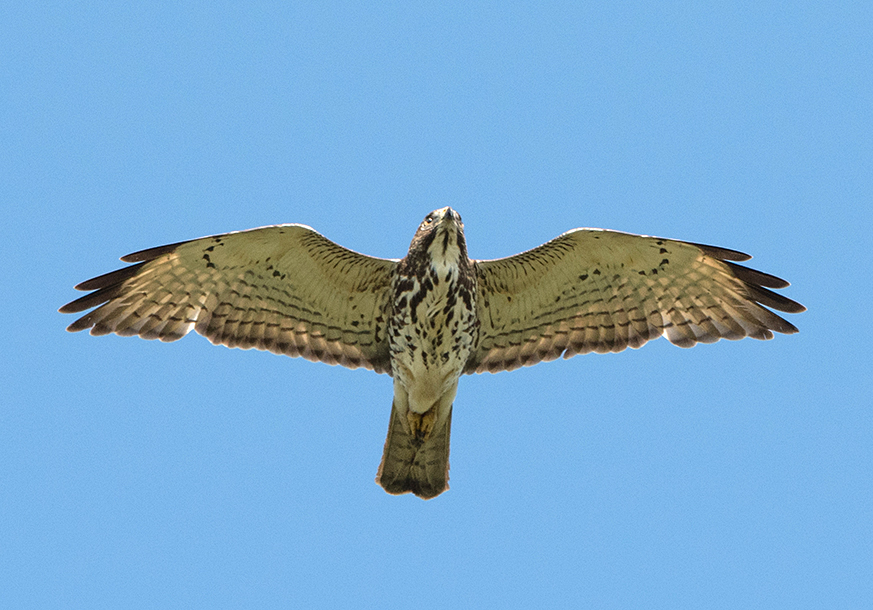| Infrequently Seen |
Spring: Broad-winged Hawks commonly pass through the Washington metro area in the spring while migrating from Central and South America. A few nest in or near the Washington area, but they are uncommon during the breeding season. They are infrequently seen at Monticello Park, although more probably fly over than are counted. Broad-winged Hawks usually migrate in mid-April when not many birders are in the park.
Fall: Very few Broad-winged Hawks have been seen flying over Monticello during fall migration.
Where to See Them in the Park
Birders at Monticello Park during the spring migration usually focus on the trees and the stream, and they may not look high in the sky where Broad-winged Hawks are likely to be. Broad-winged Hawks are not known to perch in the park.
Physical Description

Broad-winged Hawks are in the genus Buteo, along with the Red-shouldered and Red-tailed Hawks. Broad-wings are smaller and more compact than Red-tails, who are more than 25 percent larger. The wings of the Broad-winged are more pointed and not as broad. The sexes are similar. Broad-winged Hawks have a number of races, color morphs, and plumages, and so they are sometimes easier to identify by size and shape. Adults have a more pronounced border around the back edge of their wing than a Red-tailed Hawk. The tail is mostly black, with a prominent white band in the middle and a fainter white band closer to the wings.

The juvenile does not have the prominent white tail band — its light tail has multiple faint dark bars. The trailing edge of the juvenile's wing is not as pronounced as on an adult. The streaking on the underparts is more extensive than the belly band streaking on a Red-tailed Hawk.
Vocalizations
The call of the Broad-winged is a high-pitched whistle. During the breeding season, Broad-winged Hawks spend most of their time in forests, and they are one of the hawks mimicked by Blue Jays.
Hear the call of the Broad-winged Hawk.Notes
Ornithologists use the term kettle to describe a large group of soaring birds, usually raptors. One of the great spectacles in the bird world is to see huge kettles of hawks migrating through Central America and Mexico. Broad-wings are the most common species in these kettles, and the numbers sometimes are in the hundreds of thousands. The origin of the term kettle is disputed. An early use was by the ornithologist Donald Heintzelman when talking about the hawk migration in Cape May, New Jersey. He thought the huge mass of hawks resembled the boiling of liquids in a kettle. A conflicting claim is that the term comes from an area called the Kettle in Pennsylvania near Hawk Mountain, which is one of the best known hawk-watching venues in the United States.
Origin of Names
Common Name: Broad-winged from their wide wings. Hawk from an Anglo-Saxon word that means seize.
Genus Name: Buteo means hawk.
Species Name: Platypterus means broad-winged.
Broad-winged Hawk video footage
Return to the Index
